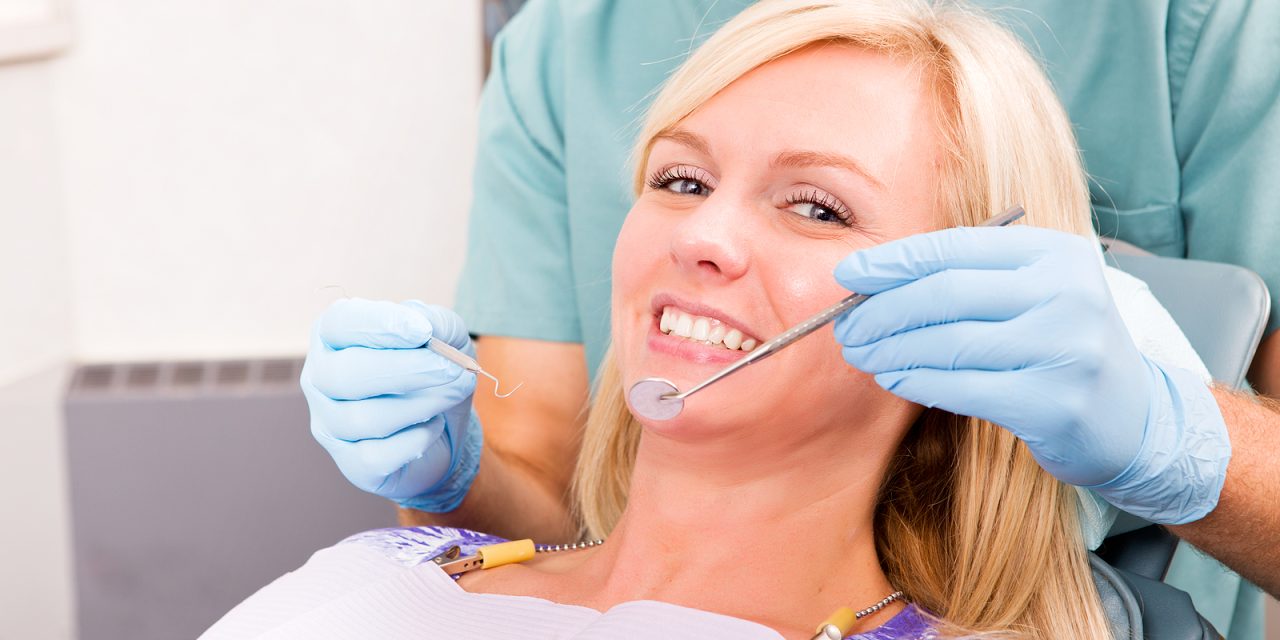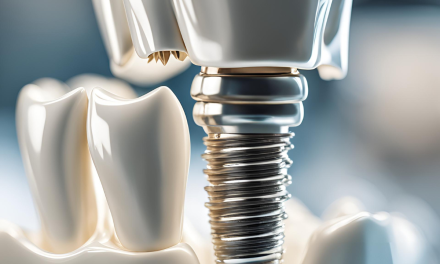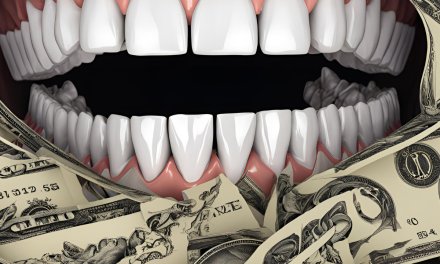Medicaid provides dental coverage for millions of Americans, but the specific services covered can vary widely depending on where you live.
Many states offer basic dental care for adults and more comprehensive coverage for children.
Medicaid typically covers essential dental services like cleanings, fillings, and tooth extractions.
For kids, Medicaid offers extensive dental benefits through the Early and Periodic Screening, Diagnostic, and Treatment (EPSDT) program. This includes preventive care, pain relief, and treatments to restore teeth and maintain dental health.
Adult coverage is more limited in some states, focusing mainly on emergency services to relieve pain and treat infections.
Finding a dentist who accepts Medicaid can sometimes be challenging. Many states provide resources to help locate Medicaid dental providers in your area.
It’s important to check with your state’s Medicaid office or visit their website to learn about the specific dental services covered in your location.
Key Takeaways
- Medicaid dental coverage varies by state but generally includes basic services like cleanings and fillings.
- Children receive more comprehensive dental benefits through Medicaid’s EPSDT program.
- Patients should check with their state Medicaid office to find local dentists who accept Medicaid.
Understanding Medicaid Dental Coverage
Medicaid dental coverage varies by state and age group. It provides essential oral health services to eligible individuals and families. The program aims to improve access to dental care for low-income Americans.
Eligibility and Enrollment
To get Medicaid dental coverage, you must meet certain criteria. These include income level, family size, and state of residence.
Each state has its own rules for who can join.
To enroll, you can:
- Apply online through the Health Insurance Marketplace
- Contact your state Medicaid agency
- Visit a local health center
Once approved, you’ll get a Medicaid card. Use this card when you go to the dentist. Make sure to find a dentist who takes Medicaid patients.
Scope of Medicaid Dental Benefits
Medicaid dental benefits differ from state to state. Some states offer basic care, while others provide more services.
Common covered services include:
- Teeth cleaning
- X-rays
- Fillings
- Tooth extractions
Some states may cover:
- Root canals
- Dentures
- Crowns
Adults often have fewer covered dental services than children. Many states only cover emergency dental care for adults. Check with your state Medicaid office to learn what’s covered.
Medicaid Dental Services for Children
Children have strong dental coverage under Medicaid. This is due to the Early and Periodic Screening, Diagnostic, and Treatment (EPSDT) benefit. EPSDT ensures kids get the care they need to stay healthy.
Medicaid dental coverage for children includes:
- Regular check-ups
- Cleanings
- Fluoride treatments
- Sealants
- Fillings
- Orthodontics (if medically needed)
The Children’s Health Insurance Program (CHIP) also offers dental care. CHIP helps kids in families that earn too much for Medicaid but can’t afford private insurance.
Essential Dental Services
Medicaid covers a range of important dental services to maintain oral health. These services focus on prevention, basic treatments, and major procedures when needed.
Preventive Care
Preventive dental services are a key part of Medicaid coverage.
Regular cleanings help remove plaque and tartar buildup. Dentists also check for signs of decay or gum disease during these visits.
Fluoride treatments strengthen tooth enamel. This makes teeth more resistant to cavities.
For children, dental sealants offer extra protection. These thin coatings are applied to the chewing surfaces of back teeth.
X-rays may be taken to spot hidden problems. Dentists use them to check for cavities between teeth or issues below the gum line.
Basic Restorative Services
When decay occurs, Medicaid often covers basic treatments.
Fillings are the most common fix for cavities. Dentists remove the decayed part of the tooth and fill it with a strong material.
For more severe decay, root canals may be needed. This procedure saves teeth by removing infected inner tissue. The dentist cleans and seals the tooth to prevent further problems.
Simple extractions are also covered. This involves removing teeth that can’t be saved. It’s often done for badly damaged or impacted teeth.
Major Restorative Services
Some states offer coverage for major dental work. This can include crowns to protect weak teeth or replace large fillings. Bridges may be covered to fill gaps from missing teeth.
Full or partial dentures might be an option for those missing many teeth. These removable appliances restore function and appearance.
In some cases, Medicaid may cover oral surgery for complex dental issues. This could involve removing impacted wisdom teeth or treating jaw problems.
Coverage for major services varies widely by state. Patients should check their specific plan details.
Emergency Dental Services
Medicaid covers emergency dental services to address severe pain and urgent oral health issues. These services aim to provide quick relief and prevent further complications.
Immediate Relief of Pain
Medicaid typically covers emergency services for severe tooth pain.
This includes treatments like tooth extractions for badly damaged or infected teeth. Dentists may also provide temporary fillings to alleviate pain from cavities.
In some cases, Medicaid covers root canal treatments for severe infections. These procedures help save the tooth and stop the pain. Antibiotics may be prescribed to fight infections causing intense discomfort.
Urgent Dental Care
Medicaid often covers treatments for dental injuries from accidents. This can include repairing broken or chipped teeth. Dentists may also reattach knocked-out teeth if treated quickly.
Emergency dental services under Medicaid may address severe gum infections or abscesses. These conditions can cause intense pain and swelling. Treatment might involve draining the abscess and prescribing antibiotics.
Medicaid may cover emergency care for uncontrolled bleeding after dental procedures. This can include treatments to stop the bleeding and prevent complications.
Routine Dental Exams and Cleanings
Medicaid covers routine dental exams and cleanings for children in all states.
Regular dental cleanings and exams are essential for maintaining good oral health.
For adults, coverage varies by state. Some states offer more comprehensive dental benefits, while others provide limited or emergency-only services.
Dental exams typically include:
- Visual inspection of teeth and gums
- X-rays (when necessary)
- Oral cancer screening
- Assessment of overall dental health
Professional cleanings involve removing plaque and tartar buildup. This helps prevent cavities and gum disease.
The frequency of covered exams and cleanings differs between states. Some states may cover dental checkups and cleanings twice a year, while others may only cover one routine visit.
Regular dental visits are crucial for early detection of issues. They also help maintain good oral hygiene habits. Patients should check with their state’s Medicaid program to understand their specific coverage for exams and cleanings.
Management of Dental Health Issues
Medicaid covers several important treatments for common dental problems. These services help protect oral health and prevent more serious issues from developing.
Treatment for Gum Disease
Gum disease is a major threat to dental health. Medicaid often covers treatments for gum disease, including deep cleanings and scaling. These procedures remove plaque and tartar buildup below the gum line.
For more advanced cases, Medicaid may cover periodontal surgery. This treats severe gum infections and helps prevent tooth loss. Patients can also get antibiotics to fight gum infections.
Regular cleanings are key for preventing gum disease. Medicaid typically covers routine dental cleanings once or twice per year. These cleanings remove plaque and check for early signs of gum problems.
Tooth Decay and Restoration
Tooth decay is another common dental issue. Medicaid usually covers fillings to treat cavities and stop decay from spreading. For badly damaged teeth, Medicaid may pay for crowns or root canals.
In some cases, Medicaid covers tooth extractions when a tooth can’t be saved. This prevents infections and other complications. After extraction, patients might get partial dentures or bridges to replace missing teeth.
Fluoride treatments are often covered to prevent tooth decay. These treatments strengthen tooth enamel and make it more resistant to decay. Dental sealants for children are another preventive service many Medicaid programs offer.
Adult Medicaid Dental Coverage
Medicaid dental coverage for adults varies widely across the United States. Many states limit services to emergency care only, while others offer more comprehensive benefits.
Coverage Differences by State
Adult dental coverage in Medicaid programs is not uniform nationwide. Some states provide extensive benefits, while others offer limited or no coverage.
Most states cover emergency dental services for adults. These often include treatments for severe pain or infections.
Less than half of U.S. states currently provide comprehensive dental care for adult Medicaid enrollees. This can include preventive services, restorative care, and dentures.
A few states don’t offer any dental benefits for adults beyond emergency services. This leaves many low-income adults without access to routine dental care.
Some states have expanded their adult Medicaid dental coverage in recent years. These changes aim to improve oral health and reduce emergency room visits for dental issues.
Enhanced Benefits Under EPSDT
The EPSDT benefit offers expanded dental coverage for children on Medicaid. It includes a set schedule for regular checkups and a wide range of treatments to keep kids’ teeth healthy.
Periodicity Schedule
The EPSDT benefit uses a dental periodicity schedule. This schedule sets how often kids should see a dentist. It’s based on their age and risk factors.
For example, most kids should have their first dental visit by age 1. After that, they typically need checkups every 6 months. Some kids at higher risk may need to go more often.
The schedule also outlines when certain services should happen. This includes:
- Fluoride treatments
- Dental sealants
- X-rays
Comprehensive Dental Care
EPSDT covers a broad range of dental services. It goes beyond just basic care.
The goal is to prevent and treat all dental issues early.
Covered services often include:
- Regular cleanings
- Fillings for cavities
- Tooth extractions when needed
- Orthodontic care for severe bite problems
EPSDT even covers services that might not be part of regular Medicaid dental benefits. If a dentist says a treatment is needed, EPSDT often covers it.
This helps ensure kids get all the dental care they need to stay healthy.
Additional Dental Procedures and Services
Medicaid may cover some advanced dental treatments. These can help restore function and improve oral health.
Coverage varies by state and individual needs.
Dentures and Implants
Medicaid coverage for dentures and implants differs across states. Some states offer full or partial coverage for dentures. These can help people eat and speak better. Implants are less commonly covered.
Dentures may be covered if deemed medically necessary. This often applies to older adults or those with severe tooth loss.
Some states limit how often dentures can be replaced.
Dental implants are rarely covered by Medicaid. They’re often seen as cosmetic.
A few states may cover implants in special cases. This might include severe jaw problems or after cancer treatment.
Orthodontic Treatment
Medicaid usually covers orthodontic treatment for children. This includes braces and other devices to straighten teeth.
Coverage is typically limited to cases of medical necessity.
For kids, Medicaid may pay for braces if crooked teeth cause health issues. This could include trouble eating or speaking.
Each state sets its own rules for what qualifies.
Adult orthodontic coverage is rare under Medicaid. A few states might cover it for severe cases.
This could include jaw problems that cause pain or eating difficulties.
Treatment often needs pre-approval. A dentist must show it’s needed for health reasons, not just looks.
Access to Medicaid Dental Services
Medicaid dental coverage varies by state. Finding dentists who accept Medicaid can be challenging in some areas.
Patients may face long wait times for appointments.
Network of Medicaid Dental Providers
Many states have a limited number of dentists who take Medicaid patients. This can make it hard to find care.
Some areas have few or no Medicaid dental providers.
Urban areas often have more options than rural regions. Patients may need to travel far for dental visits.
Some clinics focus on serving Medicaid patients.
Community health centers often provide dental care to Medicaid members. These centers aim to improve access in underserved areas.
Wait times for appointments can be long due to high demand. Emergency dental services may be easier to access than routine care.
Some states use mobile dental clinics to reach more patients. These travel to different locations to provide care.
Advocacy and Improvement of Dental Health Policy
Dental organizations play a key role in improving Medicaid dental coverage. They work with lawmakers and regulators to expand access and reform policies.
Role of Dental Organizations
The American Dental Association (ADA) actively advocates for Medicaid dental reform. They push for policy changes to increase access to care for low-income patients.
The ADA works closely with government agencies like the Health Resources and Services Administration. Together, they aim to strengthen the dental safety net.
In August 2024, the ADA called for major changes to Medicaid dental policies. They highlighted barriers patients face in getting care.
These include high out-of-pocket costs and limited covered services.
The ADA’s Health Policy Institute studies Medicaid dental access issues. Their research informs policy recommendations.
They focus on making it easier for dentists to treat Medicaid patients.
Dental organizations also team up to push for reforms. The ADA and Association of Dental Support Organizations recently joined forces.
They urged changes to both federal and state policies to improve Medicaid dental coverage.
Frequently Asked Questions
Medicaid dental coverage varies by state and age group. Many common dental services are included, but there are some key differences and limitations to be aware of.
Does Medicaid cover braces for children and adults?
Medicaid covers braces for children in most states when medically necessary. Adult coverage for braces is rare and typically only provided for severe cases.
Eligibility criteria and approval processes differ by state. Some states may have age limits or require specific dental conditions to qualify.
Are routine dental cleanings and X-rays included in Medicaid dental coverage?
Most state Medicaid programs cover routine dental cleanings and X-rays for children. Adult coverage varies by state.
Many states offer preventive services like cleanings and X-rays for adults, but frequency may be limited. Some states only cover these services for pregnant women or those with certain medical conditions.
What are the limitations on Medicaid dental coverage for adults?
Adult dental coverage under Medicaid is often more limited than coverage for children. Some states only offer emergency dental services for adults.
Other states may have annual spending caps or limit the types of procedures covered.
Common limitations include restrictions on dentures, root canals, and crowns.
How does Medicaid handle emergency dental procedures?
Medicaid typically covers emergency dental procedures in all states. This includes treatment for severe pain, infection, or trauma.
Emergency services may include tooth extractions, treatment of abscesses, or repair of broken teeth. Coverage for follow-up care can vary by state.
Can Medicaid beneficiaries receive orthodontic treatment?
Orthodontic treatment is usually covered for children when deemed medically necessary. This often requires pre-approval and documentation of severe dental issues.
Adult orthodontic coverage is rare under Medicaid. When available, it’s typically limited to cases of severe medical need or facial reconstruction.
Are there any differences in Medicaid dental coverage across different states?
Medicaid dental coverage varies significantly between states. Some states offer comprehensive dental benefits, while others provide only emergency services.
Coverage differences can include types of services offered, age restrictions, and annual spending limits.
It’s important to check with your state’s Medicaid office for specific coverage details.



















